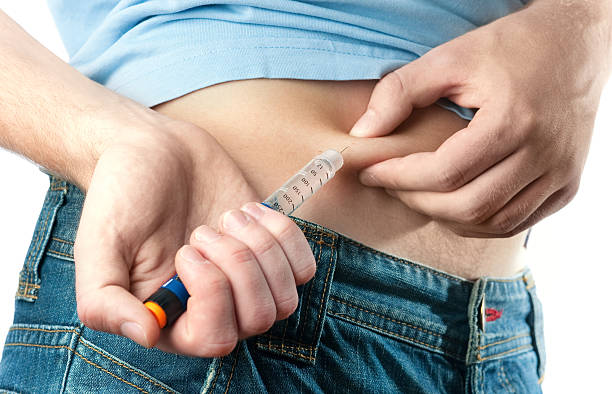INTRODUCTION
In the quest for a slimmer, more contoured body, many people have turned to non-surgical options for fat reduction. Among these, fat melting injections in Abu Dhabi have garnered significant attention. Known also as lipolytic injections or injectable lipolysis, these treatments promise to dissolve stubborn fat deposits without the need for invasive surgery. But how effective are they, and what should potential candidates know before undergoing the procedure? This article delves into the science, benefits, risks, and considerations surrounding fat melting injections.
What Are Fat Melting Injections?
Fat melting injections involve the administration of compounds directly into targeted fat deposits to break down fat cells. The two most commonly used substances are deoxycholic acid and phosphatidylcholine:
- Deoxycholic Acid: This naturally occurring molecule in the body aids in the breakdown and absorption of dietary fat. When injected into fatty tissue, it disrupts the fat cell membrane, causing the cells to burst and release their contents, which the body then metabolizes and eliminates.
- Phosphatidylcholine: Often combined with other enzymes, this compound, which is a major component of cell membranes, works similarly to deoxycholic acid in breaking down fat cells.
These injections are particularly popular for treating areas where fat tends to be more resistant to diet and exercise, such as under the chin (submental fat), the abdomen, thighs, and flanks.
How Do Fat Melting Injections Work?
The process of fat melting injections typically follows these steps:
- Consultation: A medical professional evaluates the patient to determine their suitability for the procedure and to identify the specific areas to be treated.
- Preparation: The treatment area is cleaned, and sometimes a local anesthetic is applied to minimize discomfort.
- Injection: Using fine needles, the practitioner injects the fat-dissolving solution into the subcutaneous fat layer.
- Post-Injection: The solution begins to break down the fat cells, which are then gradually processed and eliminated by the body’s natural metabolic pathways over several weeks.
Effectiveness of Fat Melting Injections
The results of fat melting injections can vary based on the individual and the area being treated. Generally, patients require multiple sessions, spaced several weeks apart, to achieve optimal results. Some studies and clinical trials have shown noticeable fat reduction and improved contour in treated areas.
For example, deoxycholic acid (marketed under the brand name Kybella in the United States) has been FDA-approved for reducing submental fat. Clinical studies have demonstrated significant reductions in chin fat with high patient satisfaction rates.
Benefits of Fat Melting Injections
- Non-Surgical Alternative: Unlike liposuction, fat melting injections do not require anesthesia, incisions, or significant recovery time.
- Targeted Fat Reduction: These injections are ideal for small, localized areas of fat that are resistant to other methods of fat loss.
- Minimal Downtime: Most patients can return to their normal activities almost immediately, with only mild side effects such as swelling, bruising, or redness.
Risks and Side Effects
While generally safe, fat melting injections are not without risks. Common side effects include:
- Swelling and Bruising: These are the most common side effects and typically resolve within a few days.
- Pain or Tenderness: Discomfort at the injection site can occur but is usually temporary.
- Numbness or Hardness: Some patients may experience temporary numbness or hardening of the treated area.
In rare cases, more serious complications can arise, such as infection, nerve injury, or uneven fat reduction leading to asymmetry.
Important Considerations
Before opting for fat melting injections, consider the following:
- Qualification of the Practitioner: Ensure that the procedure is performed by a licensed and experienced medical professional. The practitioner’s skill and experience can significantly impact the outcome and safety of the treatment.
- Realistic Expectations: Fat melting injections are intended for body contouring, not weight loss. Ideal candidates are those who are close to their ideal weight but have small areas of stubborn fat.
- Commitment to Multiple Sessions: Achieving the desired results often requires multiple treatments. Be prepared for a series of injections over several months.
- Healthy Lifestyle: Maintaining a balanced diet and regular exercise routine is crucial for sustaining the results of the injections. While the treatment reduces fat cells in the targeted area, it does not prevent future weight gain.
Conclusion
Fat melting injections offer a promising non-surgical option for individuals looking to reduce stubborn fat deposits. With the potential for minimal downtime and targeted fat reduction, these treatments can be an attractive alternative to traditional surgical methods. However, as with any medical procedure, it is essential to thoroughly research and consult with a qualified healthcare provider to ensure it aligns with your goals and expectations.
Understanding the science behind these injections, along with their benefits and risks, will help you make an informed decision. If you are considering fat melting injections, take the time to evaluate your options and choose a reputable practitioner to achieve the best possible results.





Comments